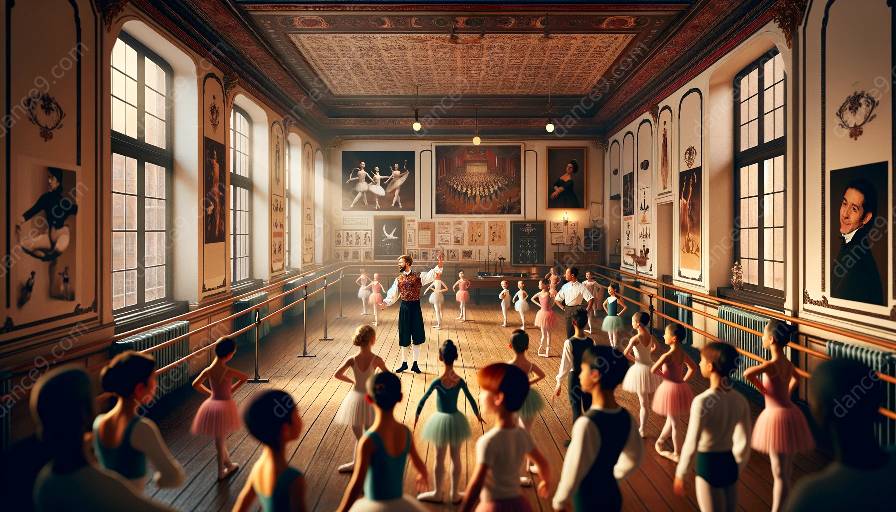Ballet, as an art form, is deeply rooted in historical and cultural contexts, and its pedagogy reflects this rich tradition. In this comprehensive discussion, we will delve into the historical and cultural aspects of ballet pedagogy, examining its influence on ballet theory and the art of teaching ballet.
History of Ballet Pedagogy
The history of ballet pedagogy is as intricate and graceful as the dance form itself. It dates back to the late 17th century, with the establishment of the first ballet schools and training methods in France and Italy. These early pedagogical practices laid the foundation for the systematic teaching of ballet technique and principles.
Over the centuries, ballet pedagogy has evolved, adapting to changing dance trends, teaching methodologies, and technological advancements. The influence of notable ballet pedagogues, such as Agrippina Vaganova, Enrico Cecchetti, and August Bournonville, has significantly shaped the way ballet is taught and practiced today.
Cultural Context of Ballet Pedagogy
Ballet pedagogy is deeply intertwined with the cultural landscapes in which it flourished. Different regions and countries have developed their distinct styles of teaching and training ballet, often influenced by their unique cultural traditions, music, and societal norms.
For example, the Russian ballet pedagogy, popularized by the Vaganova method, emphasizes the development of strength, precision, and expressiveness, reflecting the Russian cultural values of discipline, resilience, and emotional depth. Conversely, the Italian ballet pedagogy, rooted in the Cecchetti method, places emphasis on fluidity, coordination, and musicality, echoing the Italian cultural appreciation for elegance, grace, and harmony.
Impact on Ballet Theory
The historical and cultural contexts of ballet pedagogy have significantly influenced ballet theory, contributing to the understanding of movement, form, and aesthetics in ballet. From the codification of ballet terminology and technique to the development of choreographic styles and artistic interpretations, pedagogical practices have shaped the theoretical framework of ballet as an expressive and technical art form.
Furthermore, the integration of educational psychology, anatomy, and kinesiology into ballet pedagogy has enriched the theoretical understanding of how dancers learn, move, and embody the art of ballet. This multidisciplinary approach has broadened the scope of ballet theory, fostering a deeper comprehension of the physical, cognitive, and emotional aspects of dance education.
Teaching Ballet in Cultural Contexts
Understanding the historical and cultural underpinnings of ballet pedagogy is crucial for teaching ballet in diverse cultural contexts. Ballet educators must be sensitive to the cultural backgrounds and experiences of their students, integrating pedagogical approaches that honor and respect the diversity of dance traditions, artistic expressions, and learning styles.
Moreover, the adaptation of ballet pedagogy to contemporary social and cultural trends, such as inclusivity, diversity, and global interconnectedness, is essential for fostering a dynamic, inclusive, and culturally responsive ballet education environment.
Conclusion
In conclusion, ballet pedagogy in historical and cultural contexts is a multifaceted and evolving discipline that greatly informs the theory and practice of ballet education. By recognizing and embracing the historical and cultural influences on ballet pedagogy, educators and practitioners can enrich their teaching methods, expand their artistic horizons, and cultivate a deeper appreciation for the timeless art of ballet.





























